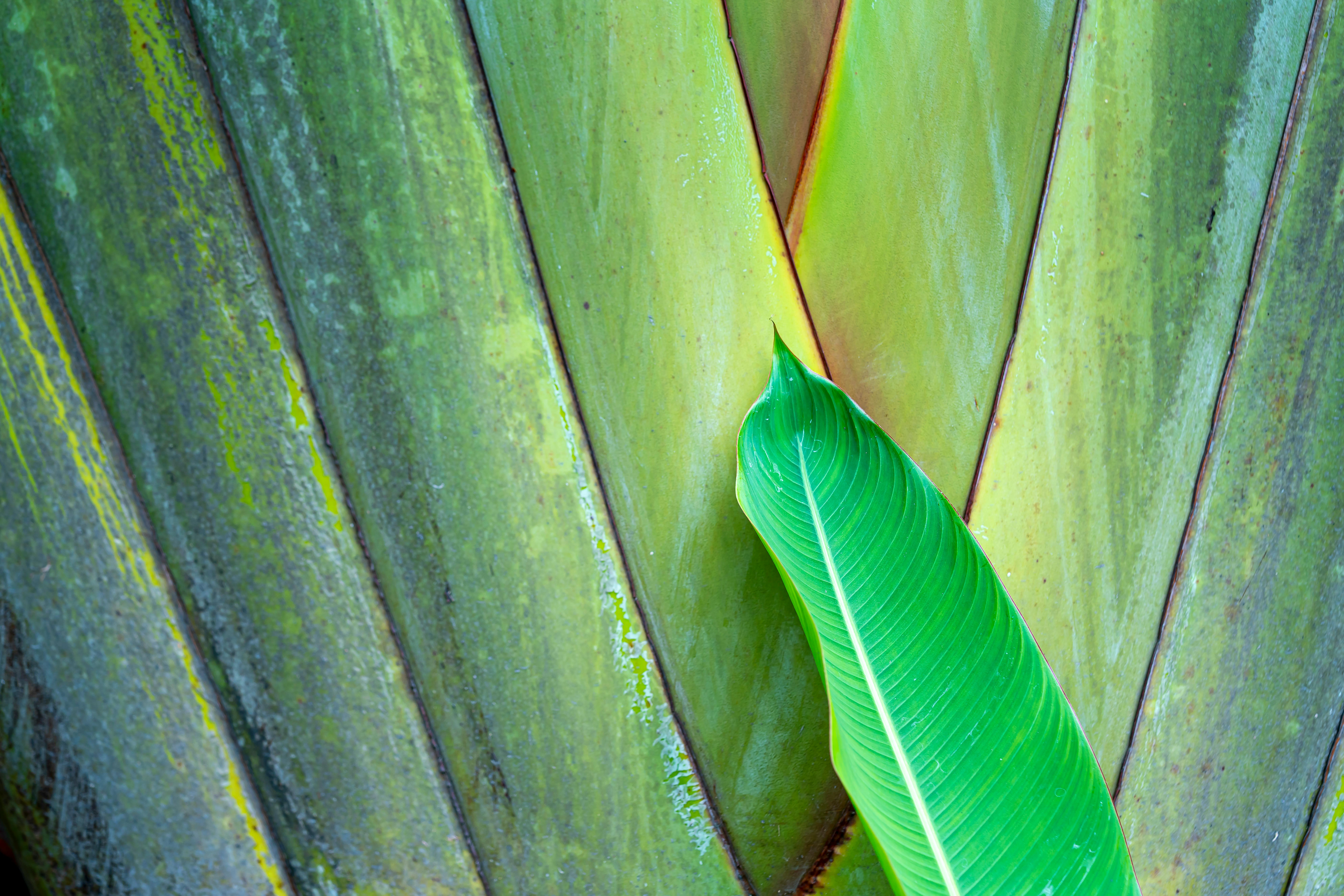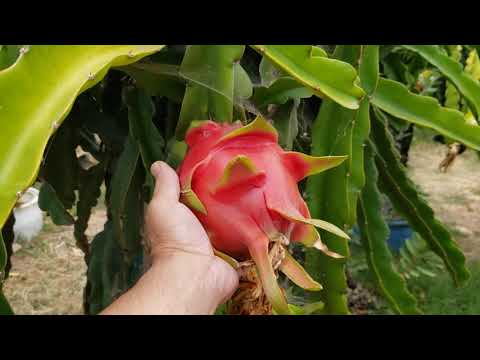Dragon fruit (also known as pitaya or pitahaya) is a tropical fruit that is rapidly gaining popularity due to its unique texture, vibrant color, and health benefits. It’s a cactus that is native to Central and South America, but can now be found in many other parts of the world like Southeast Asia and Australia. The question of how long it takes for a dragon fruit to grow is an important one for those interested in growing this plant on their own. In this article, we’ll discuss the factors that affect dragon fruit growth and the estimated timeline for when you can expect to harvest your own dragon fruit.It takes approximately 4 to 6 weeks for dragon fruit seeds to germinate. The temperature needs to be between 80-90 degrees Fahrenheit for the best results. It is also important to keep the soil moist during this time.
Climate
Dragon fruit is a tropical fruit that requires a warm climate to grow. The ideal temperature for dragon fruit growth is between 21°C and 32°C. It needs full sunlight and high humidity for optimal growth. In addition, dragon fruit plants need to be protected from strong winds because the plant’s fragility can cause it to be damaged easily.
Soil
Dragon fruit plants thrive in soil with good drainage, so it’s important to ensure that the soil is well aerated. The soil should also contain plenty of organic matter such as compost or manure to help it retain moisture and nutrients. Additionally, dragon fruit plants prefer neutral pH levels which can be tested with a simple pH test kit.
Watering
Dragon fruit plants need regular watering throughout their growing season in order to keep the soil moist, but not soggy. It’s important to avoid over-watering as this can lead to root rot and other issues with the plant’s health. Additionally, it’s best not to let the plant dry out for extended periods of time as this can affect its growth and health as well.
Fertilizer
Fertilizer is an important part of ensuring that your dragon fruit plant has all of the nutrients it needs for healthy growth. It’s best to use a fertilizer specifically designed for dragon fruits or cacti in order to get the best results from your fertilizing efforts. Additionally, fertilizing should be done on a regular basis throughout the growing season in order to ensure that your plant gets all of the nutrients it needs for optimal growth and health.
Maturity of Dragon Fruit Plant
Dragon fruit plants typically take around 3-4 years to reach maturity. The exact timing depends on the climate and environment in which the plant is grown. In climates with shorter growing seasons, it will take longer for the plant to reach maturity than in climates with longer growing seasons. The growth rate of dragon fruit plants also depends on the type of soil, water, sunlight, and fertilizer used.
The dragon fruit plant takes between one to three months to produce its first flowers. After this, it will take between two to four months for the flowers to produce fruit. The first fruits usually appear at the end of their third year and can be harvested from then on.
During the second year of growth, dragon fruit plants need plenty of water and fertilizer to maintain healthy growth. During this period, they should be pruned regularly and provided with adequate amounts of sunlight. As they mature, they become more resistant to drought and cold temperatures but still need regular watering and fertilization.
At maturity, dragon fruit plants can reach heights up to 10 feet tall with a spread of up to 8 feet wide. The stems are covered in spines and have large glossy leaves that are 11-14 inches long. The flowers are white or pinkish in color and can have either one or two sets of petals. The fleshy fruits are round or oval in shape and range from 2-5 inches long depending on the variety grown.
Dragon fruit plants require little maintenance once they reach maturity but should still be monitored for signs of disease or pests such as mealybugs or scale insects which can damage leaves or fruits if left untreated. Proper pruning is also necessary at least once a year in order to keep the plants healthy and productive over time.
In conclusion, dragon fruit plants can take anywhere from 3-4 years before reaching maturity depending on their environment and care given during this time period. With proper care such as adequate watering, fertilization, pruning and sunlight exposure these beautiful plants can remain productive for many years after reaching full maturity!
What Is The Optimal Climate For Growing Dragon Fruits?
Dragon fruits are a tropical plant species and require specific climate conditions in order to grow well. They thrive in hot, humid climates with temperatures between 70 and 90 degrees Fahrenheit with plenty of sunlight. The plants also need good soil drainage and fertile, well-aerated soil for optimal growth. Additionally, they require regular watering during the dry season to ensure proper hydration.
When it comes to humidity levels, dragon fruits prefer high humidity levels between 75 and 85 percent. This is due to the fact that they are native to tropical climates and need this high level of moisture in order to remain healthy and productive. In addition, humidity helps the plant retain its moisture during periods of drought or extended periods without rain.
The ideal climate for growing dragon fruits also includes regular rainfall throughout the year, as this helps keep the soil moist and replenish any lost nutrients. Dragon fruits also need a period of dormancy every once in a while in order to remain healthy and productive. Generally, this period should last between two to four months every year when temperatures drop below 60 degrees Fahrenheit and rainfall is scarce.
Finally, dragon fruits require protection from strong winds since they can be easily damaged by high gusts of wind or heavy storms. If you live in an area with strong winds or other extreme weather conditions, you may want to consider planting your dragon fruit plants near a wall or fence that can provide them with some protection from the elements.
All in all, dragon fruits are a tropical plant species that thrive best when grown in hot, humid climates with plenty of sunlight and regular rainfall throughout the year. They also require good soil drainage and fertile soil as well as protection from strong winds. With proper care and the right climate conditions, your dragon fruit plants should be able to produce delicious fruit for you for many years!
Growing Dragon Fruit Plant
Dragon fruit plants are a type of cactus native to Mexico and Central America. They produce large, edible fruits with a unique flavor and texture. The plants can take up to a year or more to reach maturity, so it’s important to give them the right conditions for optimal growth. With proper care, you can speed up the growing time of your dragon fruit plant and enjoy its delicious fruits sooner.
Provide Adequate Sunlight
Dragon fruit plants need plenty of sunshine in order to thrive and produce fruits. Place the pot or bed in an area that gets at least six hours of direct sunlight each day. If the location is too shady, your dragon fruit plant won’t be able to photosynthesize efficiently, leading to stunted growth and less-than-optimal yields.
Water Regularly
Dragon fruit plants require regular watering during the growing season, but don’t want their roots to sit in water for too long. If they become waterlogged, their roots will start to rot and they won’t be able to take up enough nutrients for optimal growth. Water your dragon fruit plant when the soil feels dry about an inch below the surface, making sure not to over-water it.
Fertilize When Needed
Dragon fruit plants need plenty of nutrients for healthy growth and abundant yields. Feed your plants with a balanced fertilizer every two weeks during the growing season, making sure not to over-fertilize as this could damage your plant’s roots. You can also add compost or aged manure around the base of the plant for extra nutrition.
Prune Occasionally
Pruning is an essential part of caring for dragon fruit plants as it promotes new growth and encourages larger yields of juicy fruits. Prune off any dead or damaged branches every few weeks, as well as any that are rubbing against each other or overcrowding each other. This will help ensure that your plant reaches its full potential in terms of size and yield.

What Is The Best Soil Condition For Growing Dragon Fruits?
Dragon fruits thrive best in soils that are well-drained and have a pH between 5.5 and 7.5. It is also important to ensure that the soil is rich in organic matter, as this will help the plants to achieve optimal growth. The soil should be kept moist but not overly wet, as this can lead to root rot and other diseases. Additionally, it is important to ensure that there are adequate amounts of nutrients available in the soil; organic fertilizers such as compost or manure can be added for this purpose. Finally, it is important to ensure that the soil has good aeration; adding sand or perlite can help improve aeration and drainage.
Overall, the best soil condition for growing dragon fruits is one that is well-drained, slightly acidic (pH 5.5-7.5), rich in organic matter, moist but not overly wet, and well aerated with sand or perlite. With the right conditions, dragon fruits can thrive and produce delicious fruits for many years to come!
How Much Water Does A Dragon Fruit Plant Need?
Dragon fruit plants, also known as pitaya, are a unique and attractive tropical cactus native to Central and South America. These plants adapt well to hot, dry climates and require minimal care to thrive. However, they still need an adequate amount of water to grow and produce fruit. Knowing how much water your dragon fruit plant needs is essential for keeping it healthy and producing an abundance of sweet, delicious fruit.
Dragon fruit plants are remarkably drought-tolerant and can go long periods without needing any supplemental water. In their natural environment, they get most of their moisture from the regular rain showers that occur in tropical regions. In domestic settings, however, these plants will need some help in order to stay hydrated.
Ideally, your dragon fruit plant should receive approximately one inch of water every week during the growing season. This can be accomplished by either setting up a drip irrigation system or by hand-watering with a watering can or hose. It’s important to make sure that the soil is well-drained after watering so that the roots don’t become waterlogged; otherwise, your plant may suffer from root rot or other disorders caused by too much moisture.
As with any other type of plant, it’s important to check the soil moisture levels regularly to make sure that your dragon fruit plant isn’t getting too little or too much water. The best way to do this is by sticking your finger into the soil up to the first knuckle; if it feels dry then you should add more water; if it feels wet then you don’t need to add more right away.
In addition to regular watering during the growing season, dragon fruit plants should also receive some extra water during times of extreme heat or drought in order to prevent them from going into shock or suffering from dehydration-related disorders such as leaf drop or flower bud abortion. Keep in mind that these plants are incredibly resilient and can often survive even long periods without any supplemental water; just be sure not to let them completely dry out as this could cause irreparable damage.
Overall, dragon fruit plants need about one inch of water per week during their growing season in order for them to thrive and produce sweet fruits. It’s important to check the soil moisture levels regularly so that you can adjust your watering schedule accordingly—too much or too little can both be detrimental for your plant’s health!
Common Pests
Dragon fruit plants are susceptible to a variety of pests, including fungus gnats, mealybugs, and thrips. Fungus gnats are one of the most common pests of dragon fruits plants, as they feed on the plant’s roots and leaves. Mealybugs also feed on the foliage and stems of dragon fruit plants, causing significant damage. Thrips are small insects that feed on flower buds and newly forming fruits. All three of these pests can be controlled with regular applications of insecticides.
Common Diseases
Dragon fruit plants are also prone to a variety of diseases, including anthracnose, leaf spot, and root rot. Anthracnose is a fungal disease that causes dark spots on the leaves and stems of the plant. Leaf spot is caused by a fungus that produces brown spots on leaves. Root rot is caused by a variety of fungi that attack the roots of dragon fruit plants, causing stunted growth and reduced yields. All three diseases can be prevented with proper cultural practices such as watering deeply but infrequently and avoiding wetting the foliage when watering.

Conclusion
Dragon fruit is a delicious and unique tropical fruit. Providing a sweet and refreshing flavor, dragon fruit also offers many health benefits. It is high in antioxidants, vitamins, minerals, and dietary fiber. Growing dragon fruit is relatively easy and can be done in most climates. The amount of time it takes for a dragon fruit to reach maturity depends on the variety and growing conditions. Generally, it takes about 18-24 months for the dragon fruit to fully grow.
Dragon fruit is a great addition to any garden and can provide an exotic flair to meals or snacks. Its unique flavor and health benefits make it an excellent choice for anyone looking to add something special into their diet. With proper care, dragon fruits can be harvested from the garden in only 18-24 months.
For those looking to add something new and exciting into their garden or diet, the dragon fruit is a great option. Not only does it offer a unique flavor, but also many health benefits that will leave you feeling refreshed and energized after every bite!



